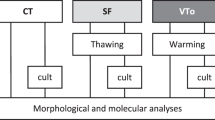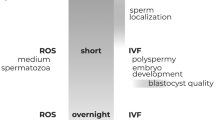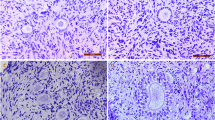Abstract
OVARIES of the mouse were centrifuged in the Beams ultra-centrifuge. In the young oocytes the cytoplasmic inclusions and components are stratified into three layers. The mitochondria occupy the centrifugal end of the cell. The Golgi material and the nucleus, together with a few small granular mitochondria, are situated in the middle region of the cell, while the centripetal end is filled with clear cytoplasm which may contain a few small Golgi elements.
This is a preview of subscription content, access via your institution
Access options
Subscribe to this journal
Receive 51 print issues and online access
$199.00 per year
only $3.90 per issue
Buy this article
- Purchase on Springer Link
- Instant access to full article PDF
Prices may be subject to local taxes which are calculated during checkout
Similar content being viewed by others
References
Beams, W. H., and King, R. L., Cytologia, 8, 353–367 (1938).
Gresson, R. A. R., Quart. J. Micro. Sci., 75, 697–721 (1933).
Author information
Authors and Affiliations
Rights and permissions
About this article
Cite this article
GRESSON, R. Effect of Ultra-centrifuging the Oocytes of the Mouse. Nature 142, 957–958 (1938). https://doi.org/10.1038/142957b0
Issue Date:
DOI: https://doi.org/10.1038/142957b0
Comments
By submitting a comment you agree to abide by our Terms and Community Guidelines. If you find something abusive or that does not comply with our terms or guidelines please flag it as inappropriate.



